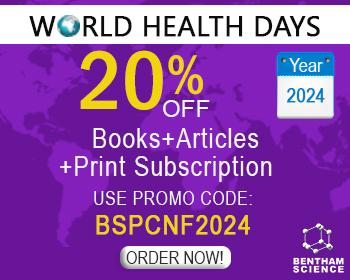Abstract
With a lifetime prevalence of more than 16% worldwide, major depressive disorder is one of the most common psychiatric disorders. Only one third of patients experience a complete therapeutic improvement with the use of current antidepressant drugs, with a therapeutic effect appearing only after several weeks of treatment. Hence, a better understanding of the mechanisms of action of current antidepressant treatments is needed to ultimately identify new targets and enhance beneficial effects. Given the intimate relationships between astrocytes and neurons at synapses and the ability of astrocytes to “sense” neuronal communication and release gliotransmitters, an attractive hypothesis is emerging stating that the effects of antidepressants on brain function could be, at least in part, mediated by direct influences of astrocytes on neuronal networks. This review aims at highlighting the involvement of astrocytes and gliotransmission in the antidepressant effects of both non- and pharmacological therapies.
Keywords: Antidepressants, astrocytes, DBS, gliotransmission, tripartite synapse.
Current Drug Targets
Title:Astrocytes and Gliotransmitters: New Players in the Treatment of Major Depression?
Volume: 14 Issue: 11
Author(s): Adeline Etiévant, Laura Lambás-Señas, Hélène Scarna, Guillaume Lucas and Nasser Haddjeri
Affiliation:
Keywords: Antidepressants, astrocytes, DBS, gliotransmission, tripartite synapse.
Abstract: With a lifetime prevalence of more than 16% worldwide, major depressive disorder is one of the most common psychiatric disorders. Only one third of patients experience a complete therapeutic improvement with the use of current antidepressant drugs, with a therapeutic effect appearing only after several weeks of treatment. Hence, a better understanding of the mechanisms of action of current antidepressant treatments is needed to ultimately identify new targets and enhance beneficial effects. Given the intimate relationships between astrocytes and neurons at synapses and the ability of astrocytes to “sense” neuronal communication and release gliotransmitters, an attractive hypothesis is emerging stating that the effects of antidepressants on brain function could be, at least in part, mediated by direct influences of astrocytes on neuronal networks. This review aims at highlighting the involvement of astrocytes and gliotransmission in the antidepressant effects of both non- and pharmacological therapies.
Export Options
About this article
Cite this article as:
Etiévant Adeline, Lambás-Señas Laura, Scarna Hélène, Lucas Guillaume and Haddjeri Nasser, Astrocytes and Gliotransmitters: New Players in the Treatment of Major Depression?, Current Drug Targets 2013; 14 (11) . https://dx.doi.org/10.2174/13894501113149990197
| DOI https://dx.doi.org/10.2174/13894501113149990197 |
Print ISSN 1389-4501 |
| Publisher Name Bentham Science Publisher |
Online ISSN 1873-5592 |
Call for Papers in Thematic Issues
New drug therapy for eye diseases
Eyesight is one of the most critical senses, accounting for over 80% of our perceptions. Our quality of life might be significantly affected by eye disease, including glaucoma, diabetic retinopathy, dry eye, etc. Although the development of microinvasive ocular surgery reduces surgical complications and improves overall outcomes, medication therapy is ...read more
 47
47
- Author Guidelines
- Graphical Abstracts
- Fabricating and Stating False Information
- Research Misconduct
- Post Publication Discussions and Corrections
- Publishing Ethics and Rectitude
- Increase Visibility of Your Article
- Archiving Policies
- Peer Review Workflow
- Order Your Article Before Print
- Promote Your Article
- Manuscript Transfer Facility
- Editorial Policies
- Allegations from Whistleblowers
Related Articles
-
Neuroinflammation in Sepsis: Sepsis Associated Delirium
Cardiovascular & Hematological Disorders-Drug Targets Antiglucocorticoids, Neurogenesis and Depression
Mini-Reviews in Medicinal Chemistry Template Dependent Human DNA Polymerases
Current Topics in Medicinal Chemistry Parkinson’s Disease: Recent Updates in the Identification of Human Dopa Decarboxylase Inhibitors
Current Drug Metabolism Heat Shock Proteins as Suppressors of Accumulation of Toxic Prefibrillar Intermediates and Misfolded Proteins in Neurodegenerative Diseases
Current Pharmaceutical Biotechnology A Brief Review of Drug Discovery Research for Human African Trypanosomiasis
Current Medicinal Chemistry From Stem Cells to Dopamine Neurons: Developmental Biology Meets Neurodegeneration
CNS & Neurological Disorders - Drug Targets Iron Chelators as Potential Therapeutic Agents for Parkinsons Disease
Current Bioactive Compounds Is There a Place for Off-Label Pharmacotherapy in Cannabis Use Disorder? A Review on Efficacy and Safety
Current Pharmaceutical Design Deubiquitinating Enzymes: Their Functions and Substrate Specificity
Current Protein & Peptide Science Discovery of JANUVIA <sup>TM</sup> (Sitagliptin), a Selective Dipeptidyl Peptidase IV Inhibitor for the Treatment of Type2 Diabetes.
Current Topics in Medicinal Chemistry Challenges and Promises of Developing Thrombin Receptor Antagonists
Recent Patents on Cardiovascular Drug Discovery Association of Oxidative Stress with Neurological Disorders
Current Neuropharmacology Calpain and Its Involvement in the Pathophysiology of CNS Injuries and Diseases: Therapeutic Potential of Calpain Inhibitors for Prevention of Neurodegeneration
Current Drug Targets - CNS & Neurological Disorders [11C]Meta-Hydroxyephedrine PET/CT
Current Radiopharmaceuticals Treatment of Inflammatory and Paraproteinemic Neuropathies
Current Drug Targets - Immune, Endocrine & Metabolic Disorders The Multifunctional Mesencephalic Locomotor Region
Current Pharmaceutical Design The Mechanistic Links Between Proteasome Activity, Aging and Agerelated Diseases
Current Genomics Non-Analgesic Effects of Opioids: Interactions Between Opioids and Other Drugs
Current Pharmaceutical Design Optimization of Lentiviral Vectors Generation for Biomedical and Clinical Research Purposes: Contemporary Trends in Technology Development and Applications
Current Gene Therapy























